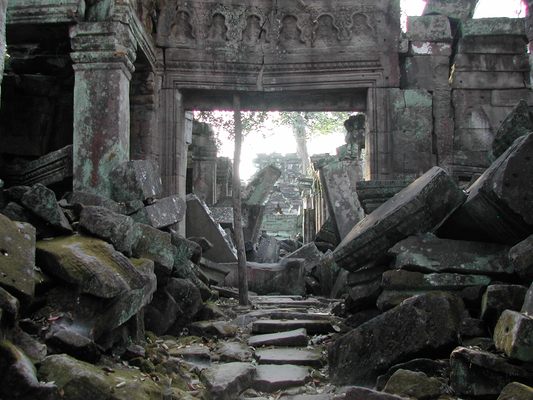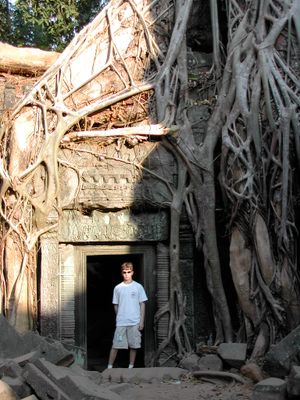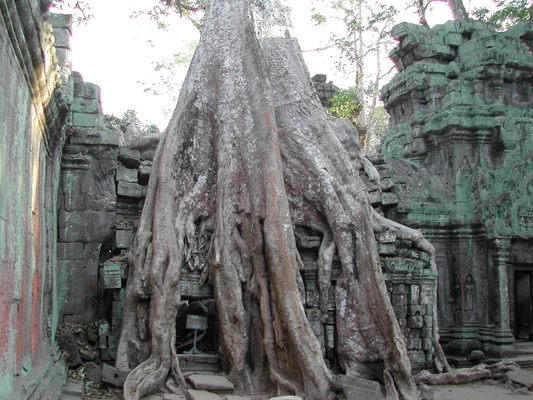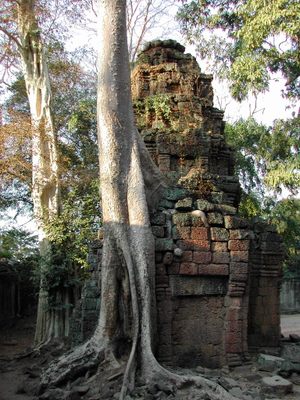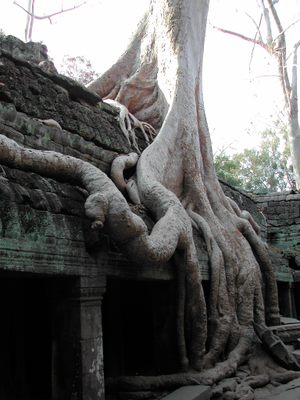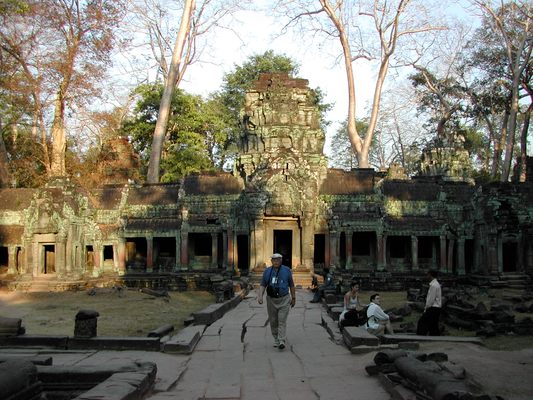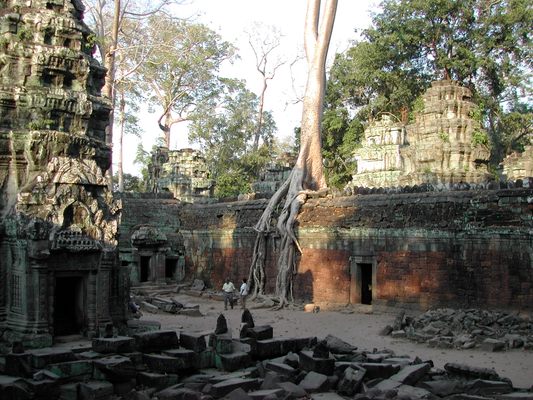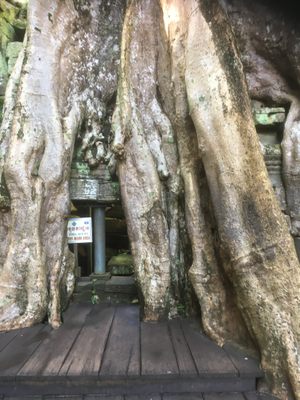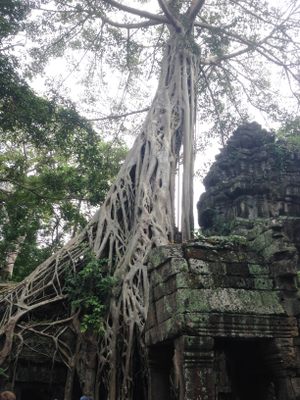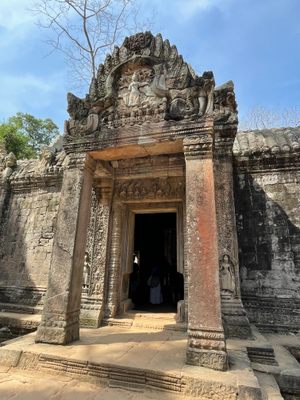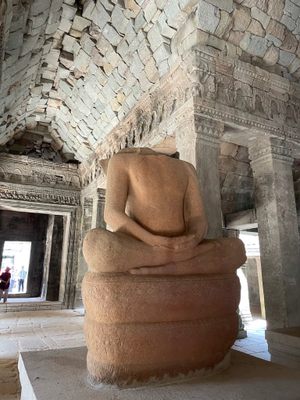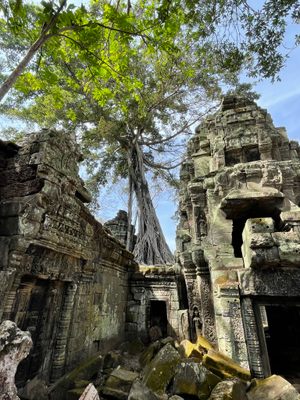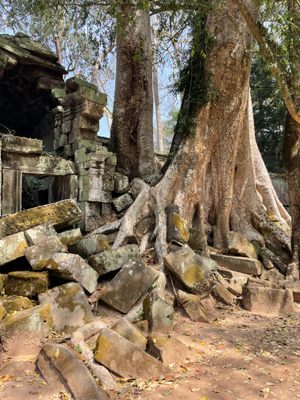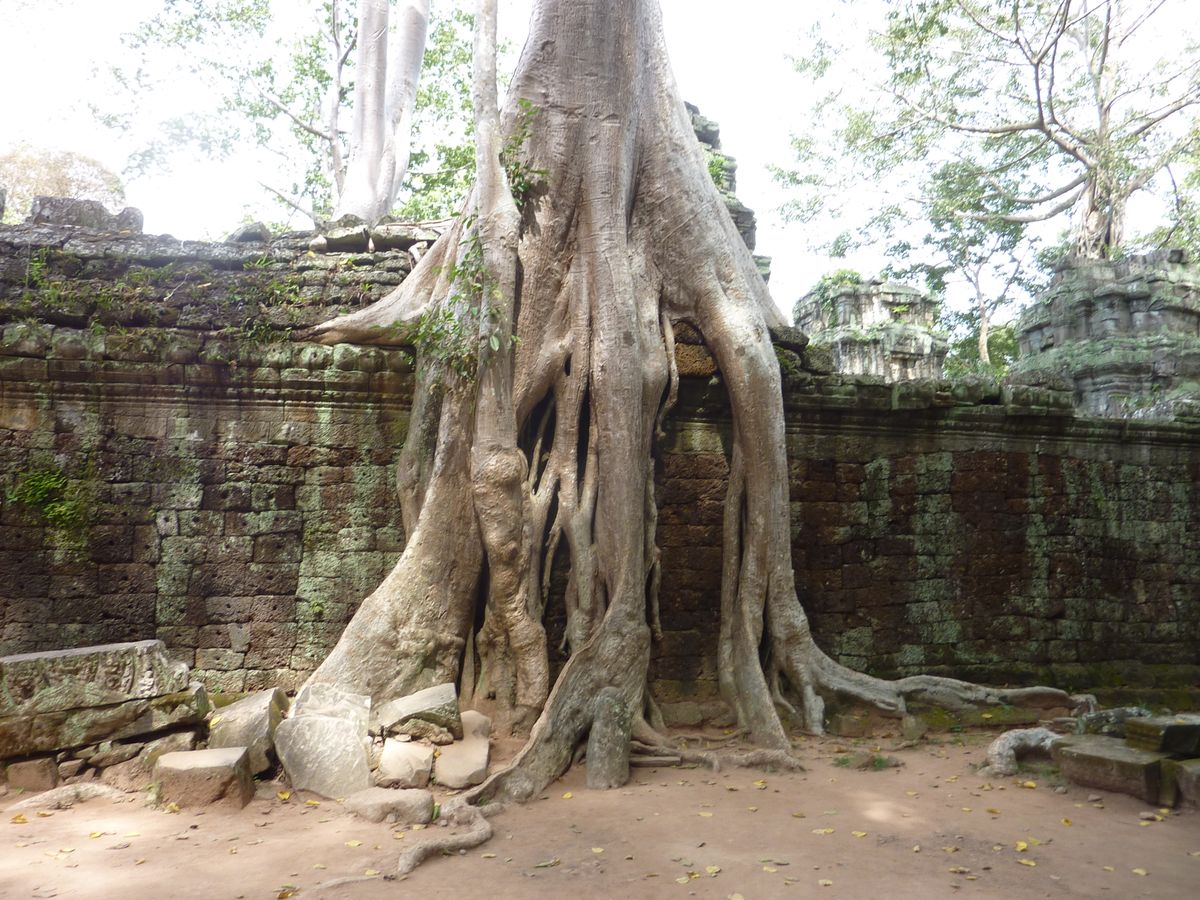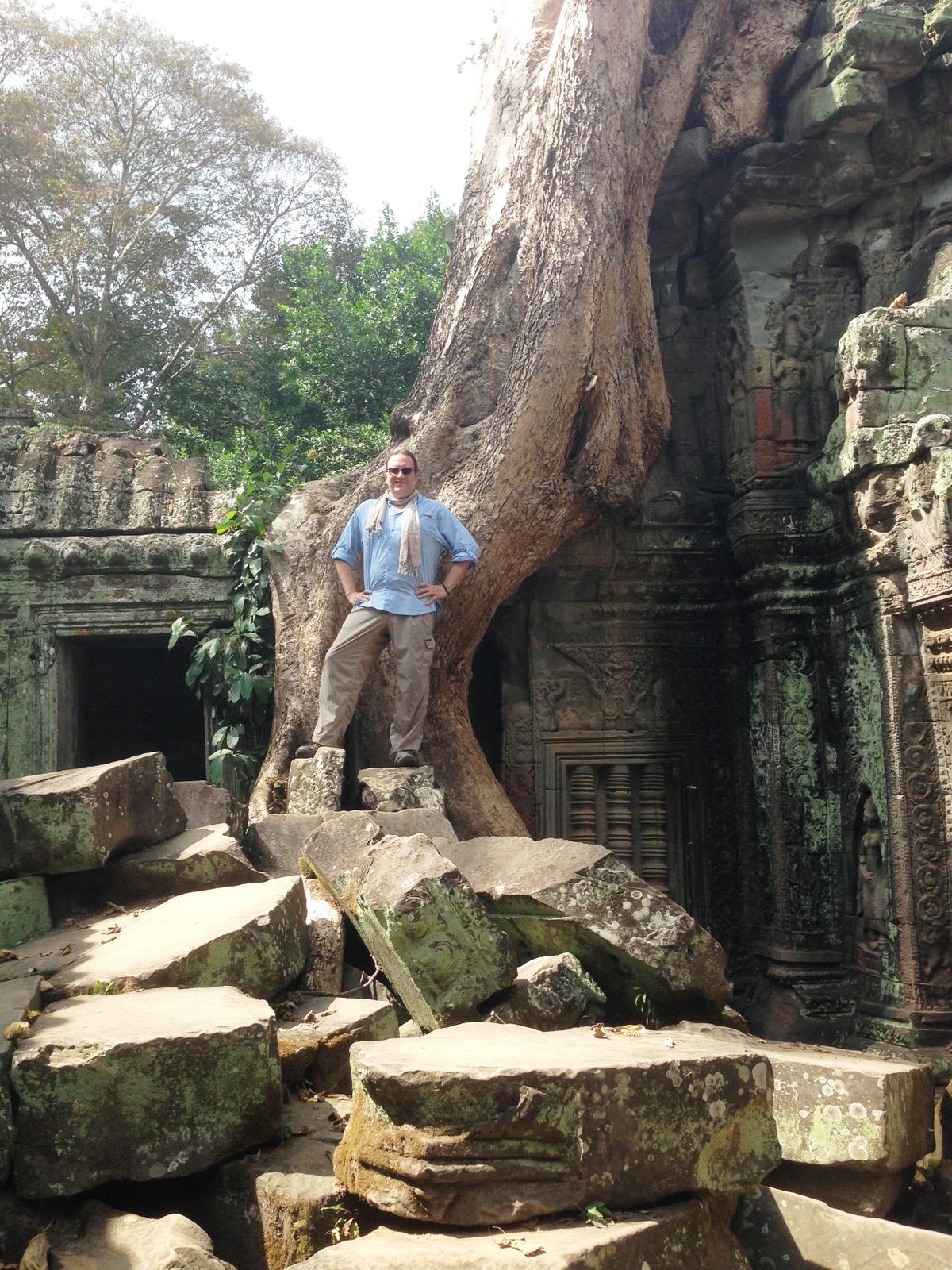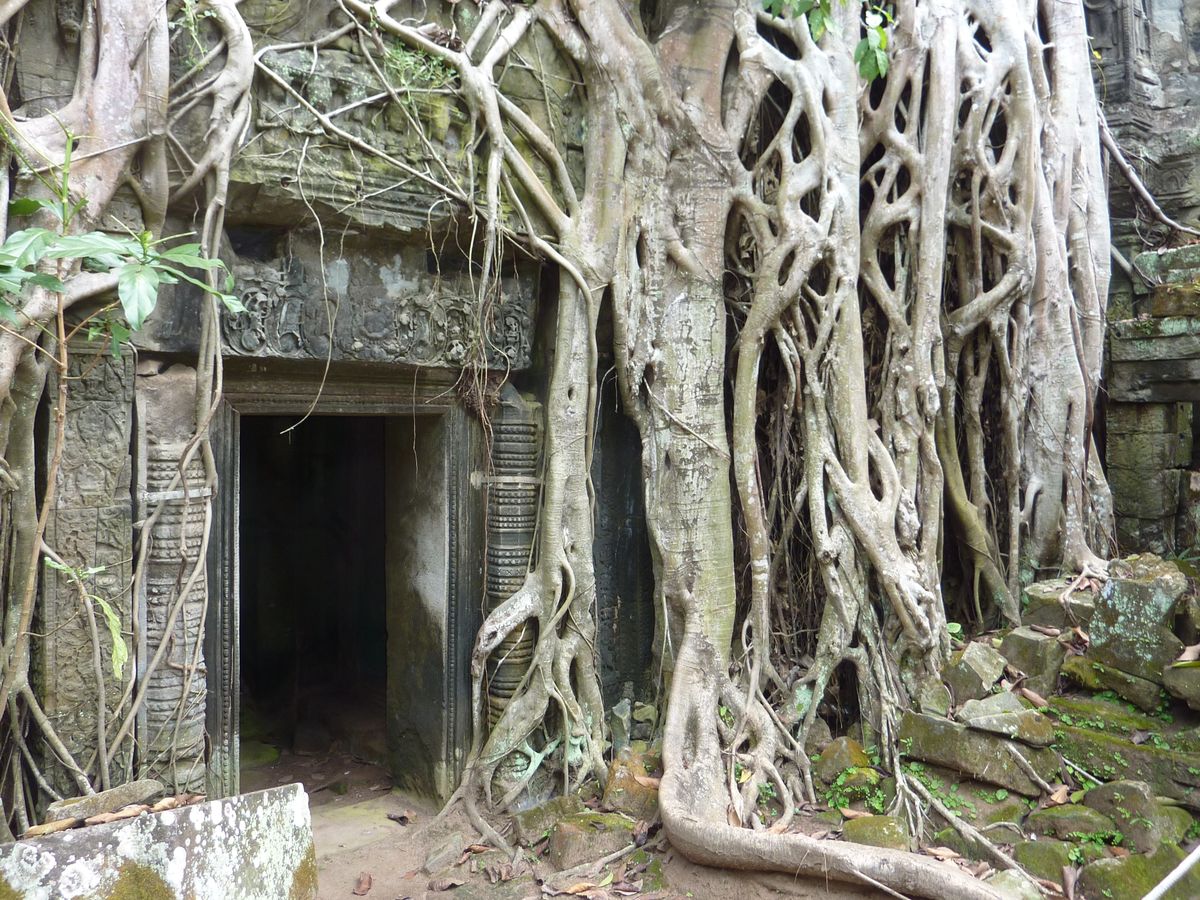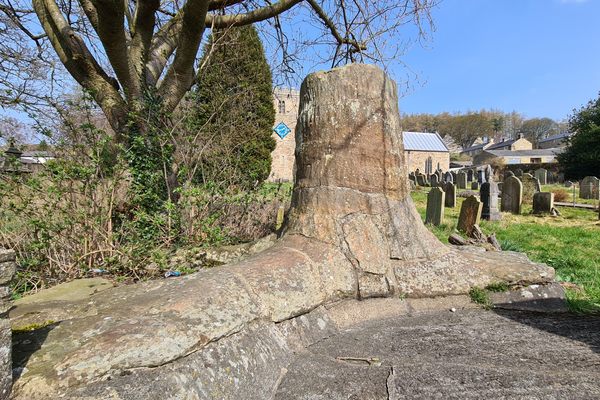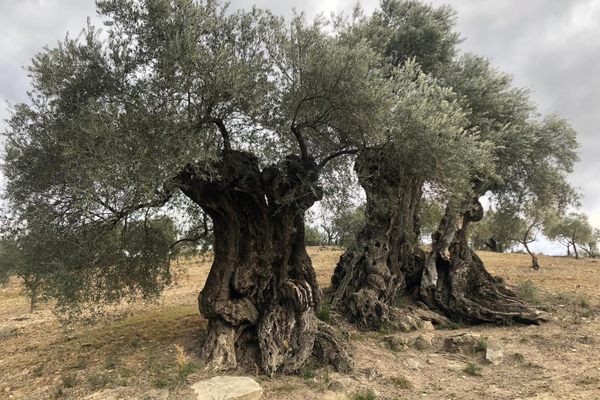About
Had Ta Prohm been diligently maintained from its construction in 1186 to the present day, it would be just a footnote to the larger Angkor Wat temple. But while Ta Prohm lay forgotten and neglected by men, the Cambodian jungle wasted no time in devouring it. Silk-cotton and strangler fig trees took root in the loosened stones of the temple, which was built entirely without mortar. Their roots wound through the structure, creating an astonishing merger of nature and architecture.
Built at the height of the Khmer Empire by Jayavarman VII as a Buddhist monastery and center of learning, Ta Prohm (known as Rajavihara back then) has a traditional Khmer structure consisting of a series of gradually smaller enclosures, the largest of which is about 1000 by 650 meters. The sanctuary is centered around the huge, elevated stone face of Prajnaparamita, the personification of wisdom, whose features were modeled after those of the king's mother.
When Angkor was rediscovered in the early 20th century by French archaeologists, all of the temples had become overgrown--but none so spectacularly as Ta Prohm. Nevertheless, as they excavated and restored the other temples, the archaeologists had to make sure that the giant tree roots enveloping Ta Prohm would not further deteriorate the structure or make it dangerous to visit. Though Ta Prohm may look like nature unfettered, the appearance of neglect is in fact fastidiously maintained.
Ta Prohm's popularity has soared in recent years along with the rest of the Angkor complex, but especially because of its appearance in the movie Lara Croft: Tomb Raider. Be sure to check out the controversial Dinosaur of Ta Prohm–a corner of the Ta Prohm temple with a strange story of its own. Another contributor to the rising popularity of Ta Prohm was the inclusion on the UNESCO World Heritage List in 1992.
Related Tags
Know Before You Go
Flights into Siem Reap Airport are a short jump from Phnom Penh or Bangkok. The best months to visit the temple complex with smaller crowds is the wet season from May to October.
Community Contributors
Added By
Published
August 6, 2009

